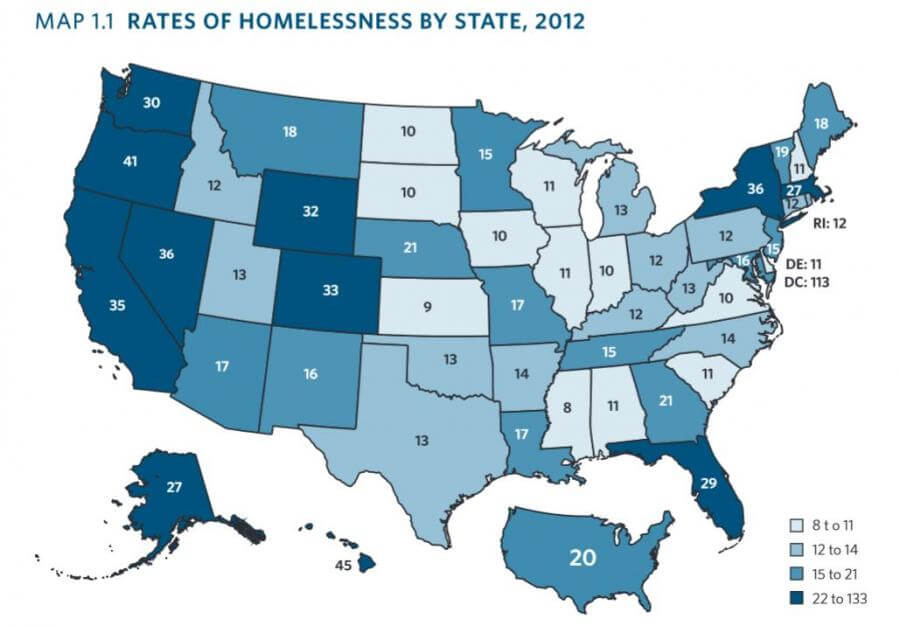Counting the Homeless: A Daunting Task
Written by Lance Cheslock, Executive Director of La Puente Home Inc.
Every year, cities and regions throughout Colorado are required to conduct a “point-in-time” count that surveys people who are “homeless”. This number is reported to the State and to the Department of Housing and Urban Development, and becomes an indicator of the need in that particular community. This is always a daunting task for La Puente.
In rural areas, such as the San Luis Valley, the enormity of the task cannot be overstated. The Valley’s 6 counties have more square mileage than the state of Massachusetts, and this count is supposed to be done during a short interval of time, using volunteers. In effect, we were only able to touch upon a few of the communities that we serve. This year we wanted to explore and reach out to those who live in makeshift housing throughout the isolated flats of the Valley.

What we found was rather disturbing. After documenting those who were at the Shelter, those that we knew were unsheltered in the dark reaches of Alamosa, and a large building in one of our agricultural communities (name withheld intentionally) with over 100 people living in it (bathrooms, but no cooking facilities), we found over 250 occupied dwellings that were not fit for human habitation. (no running water, no electricity or no heat.) Nearly all of these dwellings were miles from any main road, hidden within the desolate landscape. The dwellings were provisional in nature and included old camping trailers, out of service buses, storage sheds, and dwellings cobbled together with a myriad of materials, usually scraps that were being re-purposed in the attempt to create a survivable structure.
These “invisible” communities are void of any safety net. Law enforcement rarely ventures down such roads, there are no public utilities within miles of most dwellings, no cell phone service or postal service, and a winter or spring storm can make the roads impassable for days. Those who experience a medical emergency or simply a flat tire, are at the mercy of the elements, as they must walk long distances to seek out assistance.
We came across a man and his mother living remotely in an old mobile home. They had a flat tire on their vehicle. The son was concerned about their waning food supply and his mother’s diabetes medication. Their plan was to wait until the first of the month to hitchhike into town and get their February allotment of food stamps. He was then going to sell the food stamps to get his tire fixed and secure his mother’s medication.
It was heartache to discover that many dwellings were the homes of veterans, most of whom had been disabled from their stint in one of the wars. Wary of visitors, their self-isolating nature was usually a result of Post Traumatic Stress (PTSD). Given the lack of the presence of law enforcement and a history of theft and vandalism throughout the flats, many of the vets and dwellers carried firearms or had dogs to ensure the safety and security of their property and possessions.
The dwellings were also the homes of many elderly, families, immigrants, urban refugees and “homesteaders.” A common thread throughout the flats was the urgency to give attention to addressing basic health and safety needs. There is a lot of work to do.
In just a few days, we counted and surveyed over 950 homeless individuals for our point-in-time count. In the end, our statistical “rate” of homelessness calculates to 206 people per 10,000. This “206” score is more than 10 times the national average, more than double any given state’s rate as measured by the National Alliance to End Homelessness in 2012.
The San Luis Valley, and many other poor, rural communities continue to confront enormous, disproportionate need with severely limited resources. Communities like ours seem invisible to policymakers and the multitude of resources dedicated to urban America.
We are so grateful for those who understand what we are up against and those that support us in making our work possible.
By comparison, the San Luis Valley’s rate of homelessness is 206 per 10,000 of our population.
Source: The National Alliance to End Homelessness “The State of Homelessness in America, 2013” report.
La Puente Home is a 501(c)3 non-profit organization in Colorado’s San Luis Valley providing emergency shelter, food assistance, transitional housing, self-sufficiency services, homeless prevention, community outreach services, and job readiness training for the homeless and community members in crisis. La Puente Home endeavors to meet immediate needs and to empower people to live independently and with dignity.